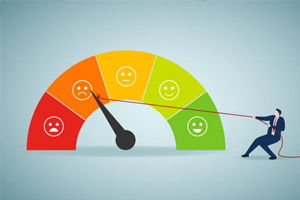Comparing homeowners insurance policies: What to look for
Enhance your insurance strategy with our comprehensive guide on optimizing homeowners and auto coverage Explore the advantages of bundling policies for potential cost savings and simplified management Learn the art of customization, tailoring coverage to meet your unique needs Navigate the insurance landscape by evaluating providers through customer feedback and testimonials Gain insights into strategic decision-making for robust protection Whether you re a homeowner or vehicle owner, empower yourself with informed choices to safeguard your assets effectively
Welcome to a comprehensive guide on optimizing your insurance coverage with a focus on homeowners and auto insurance. In this informative exploration, we delve into the intricacies of tailoring insurance policies to meet your unique needs and ensuring robust protection for your home and vehicle. From the strategic advantages of bundling home and auto insurance to the art of customizing policies, this guide aims to empower you with insights and actionable knowledge.
Discover the nuances of evaluating insurance providers through customer feedback and testimonials, gaining a deeper understanding of how to navigate the diverse landscape of the insurance industry. Whether you're a homeowner seeking to enhance your property's protection or a vehicle owner aiming for comprehensive auto coverage, we provide a breakdown of considerations, tips, and frequently asked questions to guide you in making informed decisions.
Our journey begins with the strategic approach of bundling home and auto insurance policies, exploring the potential for cost savings, simplified management, and the array of benefits that come with combining these essential coverages. We then delve into the art of customization, unraveling the intricacies of adjusting coverage limits, choosing deductibles, and adding endorsements to ensure your policy aligns seamlessly with your evolving circumstances.
As we navigate through the realm of insurance, we shed light on the significance of customer feedback and testimonials. Uncover the valuable insights that real-life experiences provide in evaluating an insurer's reliability, responsiveness, and overall customer satisfaction. This guide seeks to equip you with the knowledge needed to make well-informed decisions in safeguarding your most valuable assets.
Whether you're a seasoned insurance seeker or embarking on the journey of acquiring your first policy, this guide serves as a compass in navigating the complexities of the insurance landscape. Empower yourself with the tools to assess, customize, and optimize your insurance coverage, ensuring that your home and auto are safeguarded with the utmost care and consideration.

Understanding Homeowners Insurance Policies
Key Components of Homeowners Insurance
Homeowners insurance is a vital safeguard for your property, providing coverage against various risks. A comprehensive breakdown of its key components includes:
1. Dwelling Coverage:
This is the core component that protects the structure of your home, including the walls, roof, floors, and built-in appliances. Dwelling coverage helps repair or rebuild your home in the event of covered perils like fire, windstorms, or vandalism.
2. Personal Property Coverage:
Personal property coverage extends protection to your belongings, such as furniture, electronics, and clothing. It helps replace or repair items damaged or stolen due to covered incidents, whether they are inside or outside your home.
3. Liability Protection:
Liability coverage is crucial for protecting you financially in case someone is injured on your property, or you accidentally damage someone else's property. It can cover legal expenses and medical bills, offering peace of mind for homeowners.
4. Additional Living Expenses (ALE):
In the event your home becomes uninhabitable due to a covered peril, ALE coverage assists with temporary living expenses. This can include hotel stays, meals, and other costs incurred while your home is being repaired or rebuilt.
5. Medical Payments to Others:
This component covers medical expenses if a guest is injured on your property, regardless of fault. It can help with immediate medical bills, preventing the need for lengthy legal processes.
6. Other Structures Coverage:
For structures not attached to your home, such as a detached garage or shed, other structures coverage provides protection. It ensures these additional buildings on your property are covered in case of damage or destruction by covered perils.
7. Deductibles:
Homeowners insurance policies often come with deductibles, which are the out-of-pocket expenses you must pay before your insurance coverage kicks in. Understanding the deductible amount is crucial, as it directly impacts your financial responsibility in the event of a claim.
8. Policy Endorsements:
Policy endorsements allow you to customize your homeowners insurance policy to better suit your needs. Common endorsements include coverage for high-value items, identity theft protection, or additional coverage for specific risks not covered in a standard policy.
By understanding these key components of homeowners insurance, homeowners can make informed decisions when selecting or customizing their policies. Each component plays a vital role in providing comprehensive protection for both the structure of the home and the belongings within.
Types of Coverage Options
Homeowners insurance offers various coverage options to address the diverse needs of homeowners. A comprehensive breakdown of these coverage options includes:
1. Basic Form (HO-1) Coverage:
HO-1 is a basic and limited form of coverage that protects against specific perils explicitly listed in the policy. While it provides a minimal level of protection, it may not cover common risks, making it less common than more comprehensive options.
2. Broad Form (HO-2) Coverage:
HO-2 coverage extends protection to a broader range of perils compared to HO-1. It typically includes coverage for perils such as fire, theft, vandalism, and specific natural disasters. This option offers more comprehensive protection for homeowners.
3. Special Form (HO-3) Coverage:
HO-3 is the most common and widely chosen coverage option. It provides broad coverage for the dwelling and other structures, while personal property coverage is on a named-peril basis. It offers robust protection against a wide range of perils, excluding only those explicitly listed as exclusions.
4. Contents Broad Form (HO-4) Coverage:
Designed for renters rather than homeowners, HO-4 coverage protects personal belongings against specific perils. It does not include coverage for the dwelling itself but focuses on the tenant's possessions within the rented space.
5. Comprehensive Form (HO-5) Coverage:
HO-5 is a premium and comprehensive coverage option, providing an open-peril policy for both dwelling and personal property. This means it covers all perils unless explicitly excluded. It offers extensive protection, making it an ideal choice for homeowners seeking maximum coverage.
6. Modified Coverage Form (HO-8) Coverage:
HO-8 is designed for older homes and offers coverage for the dwelling at its market value rather than replacement cost. It considers the depreciation of the home and is suitable for homes with unique features that might be challenging to replace at current market prices.
7. Endorsements and Riders:
In addition to standard coverage options, homeowners can enhance their policies with endorsements and riders. These additions allow customization, addressing specific needs such as jewelry, art, or coverage for home-based businesses.
8. Umbrella Insurance:
While not specific to homeowners insurance, an umbrella policy can provide additional liability coverage beyond the limits of a standard homeowners policy. It offers an extra layer of protection against lawsuits and claims that exceed the standard policy limits.
Understanding the types of coverage options available is crucial for homeowners to select a policy that aligns with their unique needs and preferences. Each option offers varying levels of protection, allowing homeowners to tailor their insurance to suit their specific circumstances.
Factors Influencing Premiums
The cost of homeowners insurance premiums is influenced by a range of factors, reflecting the unique risk profile of each homeowner. A comprehensive breakdown of these influencing factors includes:
1. Location and Geographic Factors:
The location of your home significantly impacts insurance premiums. Proximity to coastlines, flood zones, or areas prone to natural disasters can result in higher premiums. Additionally, crime rates and local building costs are considered when determining premiums.
2. Dwelling Characteristics:
The characteristics of your home, including its age, size, construction materials, and overall condition, influence premiums. Newer homes with updated features may qualify for discounts, while older homes or those with higher replacement costs may incur higher premiums.
3. Coverage Amount:
The amount of coverage you choose for your dwelling and personal property directly affects premiums. Higher coverage limits result in higher premiums, reflecting the increased financial risk assumed by the insurance provider.
4. Deductible Amount:
The deductible is the amount you pay out of pocket before your insurance coverage kicks in. Opting for a higher deductible can lower your premiums but increases your financial responsibility in the event of a claim.
5. Credit Score:
Insurance providers often consider your credit score when determining premiums. A higher credit score may lead to lower premiums, as it is perceived as an indicator of financial responsibility and stability.
6. Claim History:
Your past claims history influences premiums. Homeowners with a history of frequent or significant claims may face higher premiums, as they are perceived as higher-risk policyholders.
7. Home Security Systems:
Installing security systems, such as burglar alarms, smoke detectors, and home monitoring systems, can lead to premium discounts. These systems reduce the risk of theft, fire, and other perils, making your home less risky to insure.
8. Bundling Policies:
Insurers often offer discounts for bundling homeowners insurance with other policies, such as auto insurance. Bundling can result in cost savings and make insurance more affordable.
9. Marital Status and Age:
Married homeowners and older individuals may be eligible for lower premiums. Insurance providers often view these demographics as lower risk, leading to potential discounts.
10. Pets and Liability Risks:
If you own certain breeds of dogs or have other liability risks on your property, it can impact premiums. Some breeds may be considered higher risk, leading to increased liability coverage costs.
Understanding the various factors influencing homeowners insurance premiums allows homeowners to make informed decisions, seek potential discounts, and take steps to mitigate risks, ultimately contributing to a more cost-effective insurance policy.
Policy Exclusions and Limitations
While homeowners insurance provides crucial coverage, it's equally important to be aware of policy exclusions and limitations. A comprehensive breakdown of these aspects includes:
1. Earthquake and Flood Exclusions:
Standard homeowners policies typically exclude coverage for damage caused by earthquakes and floods. Homeowners in high-risk areas for these perils may need to purchase separate policies or endorsements to ensure adequate protection.
2. Sewer Backup Exclusions:
Damages resulting from sewer backups are often excluded from standard policies. Homeowners can add endorsements to address this limitation, providing coverage for repairs and cleanup in case of sewer-related issues.
3. Home Business Exclusions:
If you operate a business from home, standard homeowners insurance may not cover business-related liabilities and assets. Special business insurance or endorsements may be necessary to fill this gap and ensure comprehensive protection.
4. High-Value Item Limits:
Standard policies may have coverage limits for high-value items such as jewelry, art, or collectibles. Homeowners can consider scheduling these items separately or purchasing additional coverage to ensure their full value is protected.
5. Aging Systems and Maintenance:
Damage resulting from the normal wear and tear of home systems, such as plumbing, heating, and electrical systems, is typically excluded. Homeowners are responsible for routine maintenance to prevent issues and ensure coverage when needed.
6. Liability Limits:
Liability coverage in homeowners insurance has limits. If a liability claim exceeds these limits, homeowners may be personally responsible for additional expenses. Consider purchasing umbrella insurance for extra liability protection.
7. Vacancy Exclusions:
If your home is vacant for an extended period, coverage may be limited. Some policies exclude certain perils or reduce coverage after a specified period of vacancy. It's crucial to inform your insurer if your home will be vacant for an extended time.
8. Specific Dog Breed Exclusions:
Some insurance providers may exclude coverage for certain dog breeds due to perceived higher liability risks. Homeowners with such breeds may need to seek specialized coverage or liability protection.
9. Trampoline and Pool Limitations:
Having a trampoline or pool can impact coverage. Some policies may exclude or limit liability coverage for injuries related to these amenities. Homeowners should implement safety measures and consider additional liability coverage if necessary.
Understanding policy exclusions and limitations is essential for homeowners to assess potential coverage gaps. Reviewing and discussing these aspects with insurance providers can help homeowners make informed decisions and take steps to address specific risks that may not be covered by standard policies.
Comparing Homeowners Insurance Policies
Researching Reputable Insurance Providers
Choosing a reputable insurance provider is a critical step in securing reliable homeowners insurance. A comprehensive breakdown of factors to consider when researching insurance providers includes:
1. Financial Stability:
Assess the financial stability of insurance providers by reviewing their financial ratings from agencies like A.M. Best, Moody's, or Standard & Poor's. A financially stable insurer is better equipped to fulfill its financial obligations in the event of a large number of claims.
2. Customer Reviews and Ratings:
Explore customer reviews and ratings on independent platforms. Pay attention to feedback regarding claims processing, customer service, and overall satisfaction. Consistent positive reviews are indicative of a reliable and customer-friendly insurer.
3. Coverage Options and Flexibility:
Examine the range of coverage options offered by each provider. A reputable insurer should provide flexible policies that can be tailored to meet individual needs. Consider whether they offer additional endorsements for specific risks or valuable items.
4. Claims Process:
Understand the claims process of each insurance provider. A smooth and efficient claims process is crucial in times of need. Check for online claim filing options, 24/7 customer support, and transparent communication throughout the claims resolution process.
5. Discounts and Bundling Options:
Inquire about available discounts and bundling options. Many insurers offer discounts for factors such as having a security system, being claims-free, or bundling home and auto insurance. Taking advantage of these discounts can result in cost savings.
6. Licensing and Accreditation:
Ensure that the insurance provider is licensed in your state and holds necessary accreditations. This ensures they adhere to state regulations and industry standards. You can verify this information through your state insurance department.
7. Local Presence and Accessibility:
Consider insurers with a local presence or regional offices. Local agents may have a better understanding of regional risks and can provide more personalized service. Accessibility is crucial for ease of communication and support.
8. Policy Transparency:
Review policy documents to ensure transparency. A reputable insurer clearly outlines coverage details, exclusions, and limitations in a way that is easy for policyholders to understand. Ask questions about any unclear terms or conditions.
9. Industry Reputation:
Investigate the overall reputation of the insurer within the insurance industry. Consider whether they have received any industry awards or recognitions. A positive industry reputation is a good indicator of reliability and professionalism.
10. Licensing and Complaints:
Check the licensing status of insurance providers through your state's insurance department. Additionally, research any consumer complaints or regulatory actions against the insurer. A low complaint ratio suggests customer satisfaction and fair business practices.
Thoroughly researching insurance providers is essential for making an informed decision. By considering factors such as financial stability, customer reviews, coverage options, and transparency, homeowners can confidently select a reputable insurer that meets their specific needs and provides reliable protection.
Comparing Coverage Inclusions
When comparing homeowners insurance policies, a thorough examination of coverage inclusions is crucial. A comprehensive breakdown of key coverage inclusions includes:
1. Dwelling Coverage:
Review the limits and terms of dwelling coverage, ensuring it adequately covers the cost of rebuilding or repairing your home in case of covered perils. Assess whether it includes structures attached to the home, such as a garage or porch.
2. Personal Property Coverage:
Examine the coverage for personal belongings, considering both on-premises and off-premises protection. Check for coverage limits on high-value items and determine if additional endorsements or scheduling is necessary for full protection.
3. Liability Protection:
Evaluate the liability coverage provided, including limits. This coverage protects against lawsuits for bodily injury or property damage caused by you or your family members. Ensure the limits are sufficient to cover potential legal expenses.
4. Additional Living Expenses (ALE):
Check the ALE coverage, which helps with living expenses if your home becomes uninhabitable due to a covered peril. Assess the coverage duration and the types of expenses covered, such as temporary housing and meals.
5. Medical Payments to Others:
Review the coverage for medical payments to others, which covers medical expenses for guests injured on your property. Understand the limits and whether this coverage is adequate for potential medical costs.
6. Other Structures Coverage:
Examine coverage for structures not attached to your home, such as a detached garage or shed. Confirm that the coverage limits are appropriate for the replacement or repair of these structures in case of covered incidents.
7. Deductibles:
Understand the deductible amounts for each coverage type. Higher deductibles can lower premiums but increase your out-of-pocket expenses in the event of a claim. Choose deductible amounts that align with your financial comfort level.
8. Endorsements and Riders:
Explore available endorsements and riders to customize your policy. Common options include coverage for high-value items, identity theft protection, or additional coverage for specific risks not covered in a standard policy.
9. Umbrella Insurance:
Consider the option of umbrella insurance, which provides additional liability coverage beyond the limits of your standard homeowners policy. This extra layer of protection is crucial for mitigating risks associated with substantial liability claims.
10. Policy Exclusions:
Understand the exclusions within the policy. Identify any specific perils or circumstances not covered by the policy. This awareness helps homeowners address potential coverage gaps and make informed decisions about additional endorsements or specialty policies.
By thoroughly comparing coverage inclusions, homeowners can ensure their policy aligns with their unique needs and provides comprehensive protection against a range of risks. Understanding the details of each coverage component is essential for making informed decisions about the level of protection required.
Evaluating Deductibles and Limits
When assessing homeowners insurance policies, a thorough evaluation of deductibles and limits is essential. Here's a comprehensive breakdown of key considerations:
1. Dwelling Coverage Limits:
Examine the dwelling coverage limit, which represents the maximum amount the insurance provider will pay to rebuild or repair your home in case of covered perils. Ensure this limit aligns with the current replacement cost of your home.
2. Personal Property Coverage Limits:
Review the personal property coverage limit, considering the value of your possessions. Assess whether the limit is sufficient to replace belongings in case of covered incidents. High-value items may require additional endorsements or separate policies.
3. Liability Coverage Limits:
Evaluate the liability coverage limits, which protect against lawsuits for bodily injury or property damage. Ensure the limits are adequate to cover potential legal expenses, and consider higher limits for increased protection, especially if you have significant assets.
4. Additional Living Expenses (ALE) Limits:
Check the ALE coverage limits, which provide financial assistance for living expenses if your home is uninhabitable due to a covered peril. Assess whether the limits are sufficient for temporary housing, meals, and other related expenses.
5. Medical Payments to Others Limits:
Review the limits for medical payments to others, covering medical expenses for guests injured on your property. Ensure the limits are appropriate for potential medical costs, considering the number of occupants and potential guests.
6. Other Structures Coverage Limits:
Examine the coverage limits for structures not attached to your home, such as a detached garage or shed. Confirm that the limits are adequate for the replacement or repair of these structures in case of covered incidents.
7. Deductible Amounts:
Understand the deductible amounts for each coverage type. The deductible is the out-of-pocket expense you must pay before your insurance coverage kicks in. Evaluate whether you prefer higher deductibles for potential premium savings or lower deductibles for reduced out-of-pocket costs in case of a claim.
8. Endorsements and Additional Coverage:
Consider any endorsements or additional coverage options that can enhance protection for specific risks. Assess the associated limits and costs for these endorsements to determine their value in mitigating potential gaps in coverage.
9. Reviewing and Adjusting:
Regularly review your policy limits and deductibles, especially when there are significant changes in your life, home value, or possessions. Adjust these values accordingly to ensure your coverage remains in line with your evolving needs.
By carefully evaluating deductibles and limits, homeowners can tailor their insurance policies to align with their unique circumstances and risk tolerance. This comprehensive approach ensures that coverage is both adequate and cost-effective, providing peace of mind in the face of potential perils.
Understanding Additional Policy Features
Aside from the standard coverage components, homeowners insurance policies may offer additional features that enhance protection and customization. A comprehensive breakdown of these additional policy features includes:
1. Replacement Cost Coverage:
Explore the option of replacement cost coverage, which ensures that your dwelling and personal property are covered at their current replacement value. This coverage avoids depreciation and provides financial support for rebuilding or replacing items with new equivalents.
2. Guaranteed Replacement Cost:
Consider guaranteed replacement cost coverage, providing coverage for rebuilding your home even if the cost exceeds the policy's limits. This extra layer of protection can be crucial in situations where construction costs surge unexpectedly.
3. Inflation Guard:
Some policies include an inflation guard feature, automatically adjusting coverage limits to account for inflation. This ensures that your coverage keeps pace with the increasing costs of rebuilding or replacing your home and belongings over time.
4. Ordinance or Law Coverage:
Check for ordinance or law coverage, which helps cover the additional costs of rebuilding or repairing your home to comply with current building codes or laws. This feature is essential, especially for older homes that may require updates to meet current standards.
5. Water Backup Coverage:
Consider water backup coverage, protecting against damage caused by water or sewage backup into your home. This coverage is valuable in situations where sewer systems overflow or backups occur due to heavy rain or other factors.
6. Identity Theft Protection:
Some homeowners policies offer identity theft protection, covering expenses related to restoring your identity if it's compromised. This can include legal fees, credit monitoring, and other identity theft recovery services.
7. Green Building Materials Coverage:
For environmentally conscious homeowners, green building materials coverage provides additional funds to rebuild or repair your home with environmentally friendly materials. This feature aligns with sustainable building practices.
8. Personal Injury Coverage:
Review personal injury coverage, which protects against non-physical injuries, such as libel, slander, or false arrest accusations. This coverage can be valuable for homeowners facing legal actions related to personal injury claims.
9. Scheduled Personal Property:
For high-value items like jewelry, art, or collectibles, consider scheduled personal property coverage. This feature allows you to specify and insure individual items at their appraised or agreed-upon value, ensuring they are fully protected.
10. Loss Assessment Coverage:
For homeowners in a community with a homeowners association, loss assessment coverage can be beneficial. It provides coverage for your share of certain assessments levied by the association in case of a covered loss affecting common areas.
Understanding these additional policy features allows homeowners to tailor their insurance coverage to better suit their needs and preferences. By considering these options, homeowners can enhance their protection and ensure comprehensive coverage for a range of potential risks.
Making Informed Decisions
Customizing Policies to Your Needs
Homeowners have the opportunity to customize insurance policies to align with their specific needs and preferences. A comprehensive breakdown of customization options includes:
1. Adjusting Coverage Limits:
Consider adjusting coverage limits based on your home's current value and the value of your belongings. Ensure that your dwelling, personal property, and liability coverage limits adequately reflect your financial situation and potential risks.
2. Choosing Deductible Amounts:
Select deductible amounts that align with your financial comfort level. Higher deductibles can result in lower premiums but require a higher out-of-pocket expense in the event of a claim. Evaluate the trade-off between premium savings and potential costs.
3. Adding Endorsements:
Explore available endorsements to add specialized coverage. Common endorsements include coverage for high-value items, identity theft protection, or additional protection for specific risks not covered in a standard policy. Tailor endorsements to address your unique needs.
4. Reviewing Policy Exclusions:
Understand policy exclusions and limitations. Identify any specific perils or circumstances not covered by the policy. Discuss with your insurer to address potential coverage gaps and explore options for additional coverage where needed.
5. Exploring Additional Features:
Explore additional policy features that can enhance protection. Consider options such as guaranteed replacement cost, water backup coverage, or personal injury coverage based on your preferences and priorities. These features can add layers of security to your policy.
6. Updating Coverage for Renovations:
If you make renovations or additions to your home, update your insurance coverage accordingly. Inform your insurer about changes to ensure that your coverage remains sufficient and reflects the increased value of your property.
7. Bundling Insurance Policies:
Consider bundling homeowners insurance with other policies, such as auto insurance. Many insurers offer discounts for bundled policies, resulting in overall cost savings. Evaluate the benefits of consolidating your insurance coverage with a single provider.
8. Explaining Unique Situations:
If you have unique situations, such as running a home-based business or owning specific pets, communicate these details to your insurer. Discuss any potential implications for coverage and explore options to address these unique circumstances.
9. Regular Policy Reviews:
Conduct regular reviews of your policy, especially when major life changes occur. This includes changes in home value, family composition, or significant acquisitions. Adjust your coverage as needed to ensure it remains in line with your evolving circumstances.
10. Seeking Professional Advice:
When in doubt, seek professional advice. Consult with insurance agents or brokers to get insights into customization options. They can provide guidance on tailoring your policy to meet your specific needs while ensuring comprehensive protection.
Customizing homeowners insurance policies allows individuals to create a tailored approach to protection. By actively reviewing and adjusting coverage based on changing circumstances, homeowners can ensure that their policy remains relevant and effective in providing the necessary security for their home and belongings.
Bundling Home and Auto Insurance
Bundling home and auto insurance is a strategic approach that offers various benefits to homeowners. A comprehensive breakdown of the advantages and considerations of bundling these insurance policies includes:
1. Cost Savings:
One of the primary advantages of bundling is cost savings. Insurance providers often offer discounts to policyholders who bundle their home and auto insurance. This results in reduced premiums for both policies, providing a cost-effective solution for comprehensive coverage.
2. Simplified Management:
Bundling streamlines insurance management by consolidating home and auto coverage under a single provider. This simplification makes it easier to track policies, make payments, and communicate with the insurer. It enhances overall convenience and efficiency for policyholders.
3. Multi-Policy Discounts:
Insurance companies typically provide multi-policy discounts for bundling home and auto insurance. This discount reflects the insurer's appreciation for the customer's commitment to multiple policies, leading to additional savings beyond individual policy discounts.
4. Single Deductible Options:
Some insurers offer the option of a single deductible for both home and auto claims when policies are bundled. This means that if a covered incident affects both your home and auto, you only need to pay one deductible, simplifying the claims process and reducing out-of-pocket expenses.
5. Loyalty Benefits:
Bundling often fosters customer loyalty, and insurers may reward loyalty with additional benefits over time. This can include loyalty discounts, rate reductions, or enhanced coverage options as a token of appreciation for maintaining multiple policies with the same provider.
6. Potential for Additional Coverages:
When bundling, insurers may offer additional coverages or endorsements that enhance protection. These could include extended liability coverage, roadside assistance, or other perks that contribute to a more comprehensive insurance package.
7. Comparative Shopping:
Before bundling, it's essential to compare the overall cost and coverage of bundled policies with separate policies from different providers. While bundling often provides savings, it's crucial to ensure that the bundled coverage meets your specific needs and preferences.
8. Individual Policy Assessment:
Despite the benefits of bundling, it's important to assess each policy individually. Confirm that the coverage levels, deductibles, and terms for both home and auto insurance meet your requirements. Bundling should enhance coverage without compromising on essential protections.
9. Policy Flexibility:
Consider the flexibility of the bundled policies. Ensure that any changes or adjustments to one policy do not overly impact the other. Policyholders should have the freedom to make modifications to individual policies as needed without affecting the entire bundled arrangement.
10. Periodic Policy Review:
Periodically review your bundled policies to ensure they remain aligned with your evolving needs. Major life changes, such as purchasing a new home or acquiring a different vehicle, may necessitate adjustments to coverage levels or policy details.
Bundling home and auto insurance provides homeowners with a practical and economical approach to comprehensive coverage. By carefully considering the advantages, potential discounts, and individual policy details, homeowners can make informed decisions that maximize benefits and ensure optimal protection for their homes and vehicles.
Reviewing Customer Feedback and Testimonials
When choosing an insurance provider for your home and auto, reviewing customer feedback and testimonials is a crucial step in the decision-making process. A comprehensive breakdown of considerations for evaluating customer feedback includes:
1. Online Review Platforms:
Start by exploring online review platforms such as Google Reviews, Yelp, or specialized insurance review websites. These platforms provide a wealth of opinions and experiences shared by actual customers, offering insights into the overall satisfaction of policyholders.
2. Consistency in Feedback:
Look for consistency in feedback across multiple reviews. Consistent themes, whether positive or negative, can provide a more accurate representation of the insurer's strengths and weaknesses. Consider both the volume and patterns of feedback for a well-rounded assessment.
3. Specific Feedback on Claims Process:
Pay close attention to feedback regarding the claims process. Customers' experiences during the claims process are particularly insightful. Positive reviews highlighting quick and fair claims settlements are indicators of a responsive and customer-centric insurer.
4. Customer Service Satisfaction:
Evaluate comments related to customer service. Responsive and helpful customer service is critical, especially during times of stress such as filing a claim. Positive feedback regarding courteous and efficient customer support is a positive sign.
5. Coverage Satisfaction:
Assess customer satisfaction with coverage. Look for testimonials that specifically mention the adequacy of coverage, whether it's for home, auto, or bundled policies. Positive comments about coverage options and flexibility indicate a well-regarded insurance provider.
6. Timeliness of Communication:
Consider feedback on the timeliness of communication. Insurers that communicate clearly and promptly with their policyholders contribute to a positive customer experience. Positive remarks about efficient communication and responsiveness are valuable indicators.
7. Handling of Complaints:
Examine how the insurer handles complaints. Reviews that highlight effective resolution of issues and a commitment to customer satisfaction, even in challenging situations, are positive signals of a customer-focused insurance provider.
8. Transparency in Policy Terms:
Look for comments regarding the transparency of policy terms and conditions. A reputable insurer ensures that policyholders fully understand their coverage. Positive feedback on transparency suggests an insurer that prioritizes clear communication and honesty.
9. Long-Term Customer Experiences:
Consider reviews from long-term customers. Positive experiences over an extended period indicate the insurer's ability to maintain customer satisfaction over time. Long-term customer loyalty is a strong testament to the insurer's reliability.
10. Seeking Recommendations:
If possible, seek recommendations from friends, family, or colleagues who have firsthand experience with the insurer. Personal referrals can provide additional perspectives and insights beyond online reviews.
By thoroughly reviewing customer feedback and testimonials, you can gain valuable insights into the reputation and service quality of an insurance provider. Consider the overall sentiment, specific feedback on critical aspects, and the experiences of long-term customers to make an informed decision that aligns with your expectations and needs.
Frequently Asked Questions (FAQs)
Q1: Is bundling home and auto insurance always cost-effective?
A1: Bundling home and auto insurance can often result in cost savings due to multi-policy discounts. However, the actual savings depend on various factors, including the insurer's policies, your specific coverage needs, and eligibility for discounts. It's recommended to compare bundled and separate policies to determine the most cost-effective option.
Q2: How can I ensure that my customized policy adequately protects my home and belongings?
A2: Customizing your homeowners insurance policy requires a thorough understanding of your coverage needs. Work closely with your insurance provider to adjust coverage limits, deductibles, and endorsements based on factors such as home value, personal property, and unique risks. Regularly review and update your policy to ensure it remains aligned with your evolving circumstances.
Q3: What should I consider when reviewing customer feedback for an insurance provider?
A3: When reviewing customer feedback, consider consistency in reviews across multiple platforms, feedback on the claims process, satisfaction with customer service, and sentiments regarding coverage options. Look for patterns in long-term customer experiences and how the insurer handles complaints. Recommendations from friends or family can also provide valuable insights.
Q4: Can I adjust my coverage limits and deductibles after bundling home and auto insurance?
A4: Yes, you can typically adjust coverage limits and deductibles even after bundling home and auto insurance. It's important to communicate any changes in your circumstances or preferences to your insurer. Keep in mind that adjusting these elements may impact your premiums, and it's advisable to discuss potential effects with your insurance provider.
Q5: How often should I review and update my bundled home and auto insurance policies?
A5: Regularly review and update your bundled policies, especially when significant life changes occur, such as home renovations, vehicle upgrades, or changes in family composition. Periodic reviews ensure that your coverage remains sufficient and aligned with your current needs, providing ongoing protection for your home and auto.




























